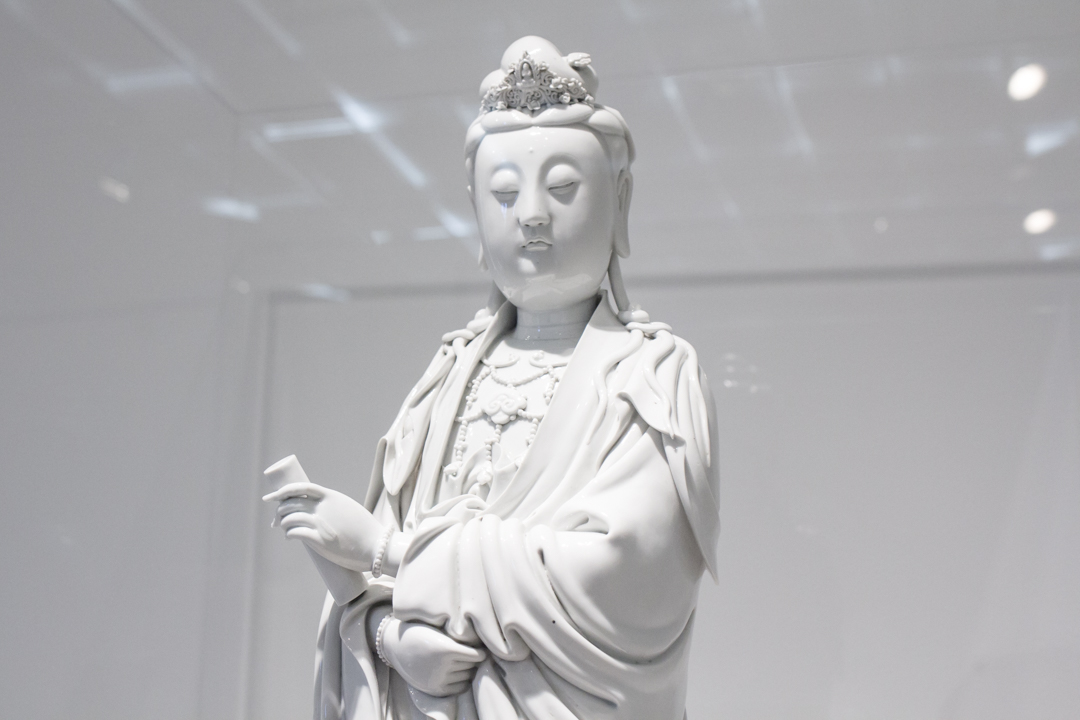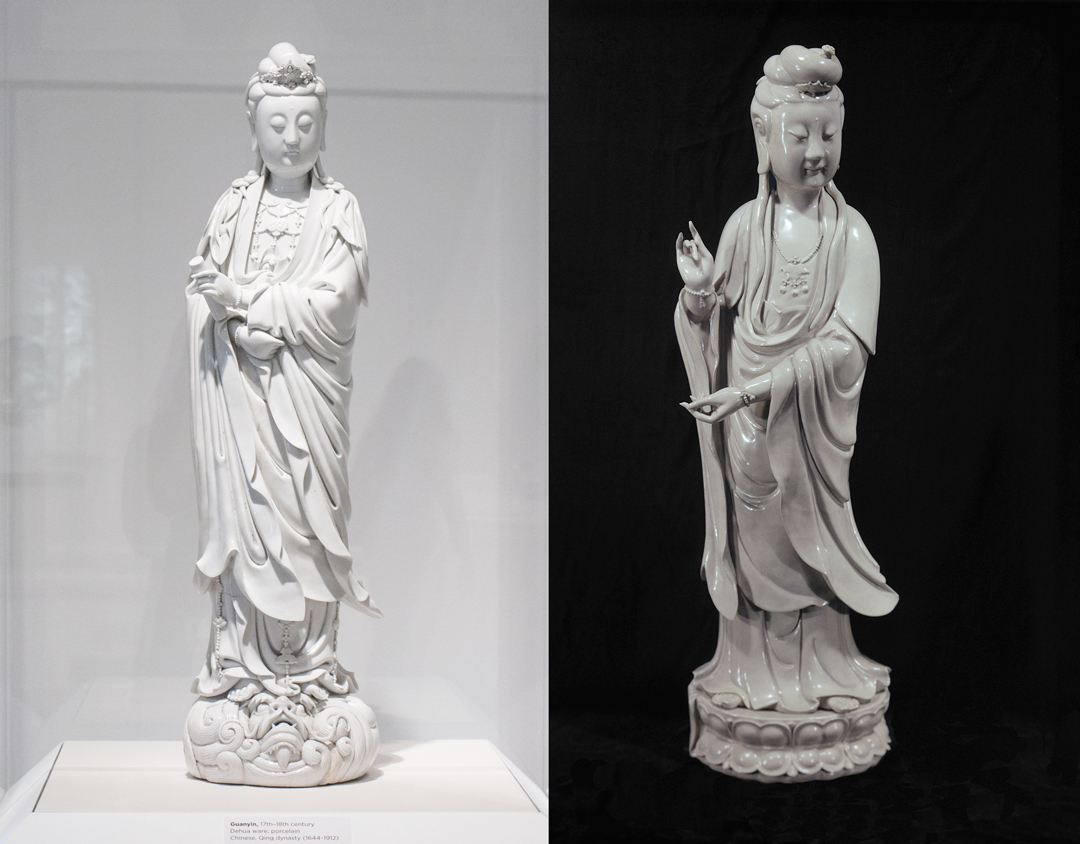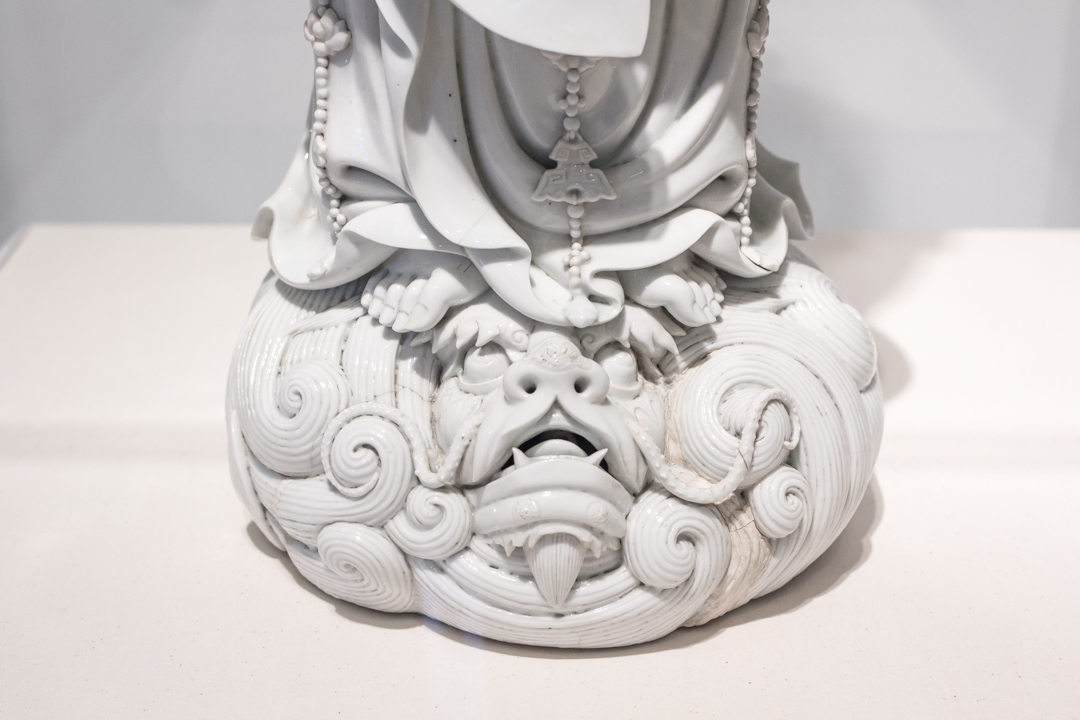Object of the Week: Guanyin

Have you ever purchased something at full price, feeling slightly guilty about it, only to find a sale item that suits you even better? Something similar happened to Dr. Fuller in the early 1930s, as he was seeking to expand his Chinese art collection in new directions.
[Fuller] acquired . . . a large Guanyin in pale glaze with ivory tone from Yamanaka in 1931 for $2,500. With a dated inscription of 1615, the Guanyin is among the few extant figures commissioned by patrons of the Kaiyuan Temple in Zhanzhou (in modern-day Fujian province). Seven months after that acquisition, Fuller encountered a whiter blanc de chine Guanyin of similar size. It was allegedly bought from Spain after the revolution and was priced at $900 by Roland Moore. Fuller bought it at once. The price gap between the two Guanyin probably bothered Fuller, especially because the latter work is whiter and hence more attractive, with a more elaborately carved base positioning the Guanyin on an auspicious beast emerging from or riding on water. Commenting on the Yamanaka Guanyin from Zhangzhou, Fuller noted that ‘years of incense smoke discolored its crackled glaze.’ He proposed exchanging the Guanyin for a Tianlongshan sculpture in 1934 . . . and Yamanaka graciously accepted. Luckily, the Guanyin remained in Seattle. Yamanaka resold the work to Fuller for $750. He made the right decision to keep the Yamanaka Guanyin because it matches the Moore Guanyin beautifully.1

The best decision, as we all know, is to walk away with both! Not only do the two Guanyin complement each other in form, as former SAM Chinese art curator Josh Yiu notes, but the message carried by the Guanyin bodhisattva is one that resonates deeply today, and Dr. Fuller’s choice to buy back his original porcelain Guanyin doubly enhances its life-giving presence at SAM. Known as Lord of Mercy, Guanyin represents boundless love and compassion. In the Mahayana doctrine, extending love to all people figures as an important step on the path to enlightenment.

The second, whiter Guanyin purchased by Dr. Fuller will graciously greet you on your next visit to the Chinese art galleries at the Asian Art Museum.
—Jeffrey Carlson, SAM Collections Coordinator
1 Josh Yiu, A Fuller View of China, Seattle, Wash.: Seattle Art Museum, 2014; 56-63.
Image: Guanyin (detail), 17th–18th century, Chinese, Qing dynasty (1644-1912), Dehua ware: porcelain, 33 1/2 x 9 x 9 in. Seattle Art Museum, Eugene Fuller Memorial Collection, 33.38, Photo: Natali Wiseman. Guanyin, 1615, Chinese, Ming dynasty (1368-1644), Dehua ware: porcelain, 34 x 10 x 9 1/4 in. Seattle Art Museum, Eugene Fuller Memorial Collection, 33.39, Photos: Natali Wiseman. Guanyin (detail).